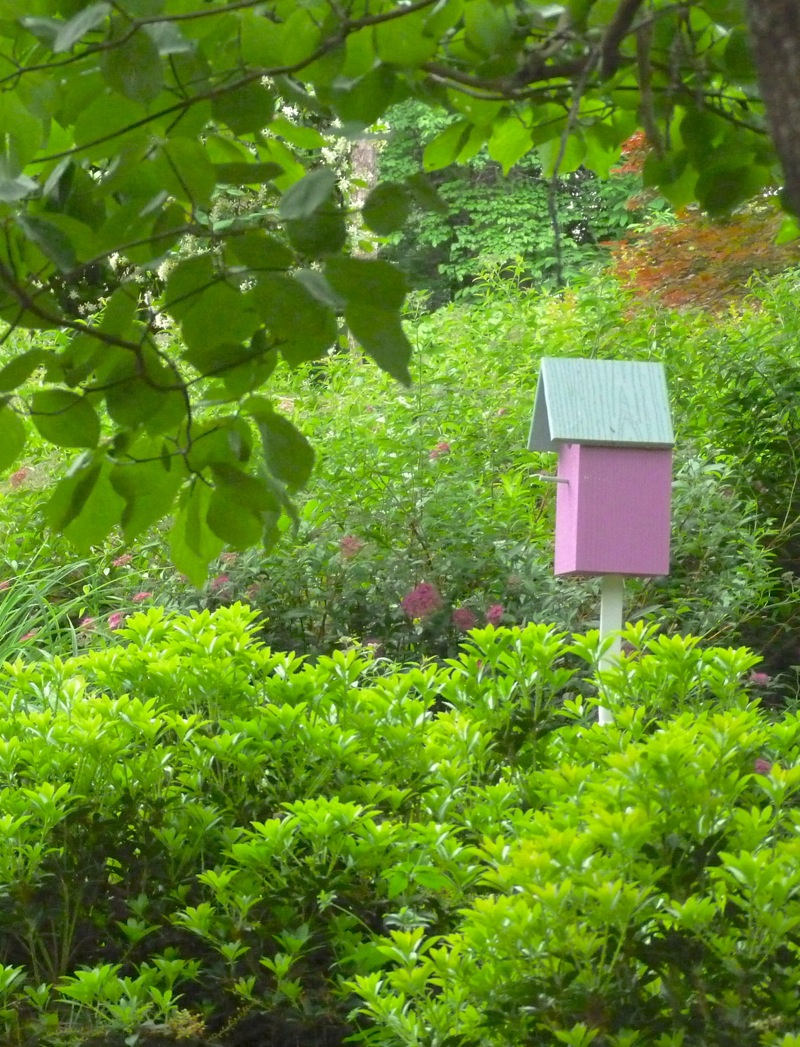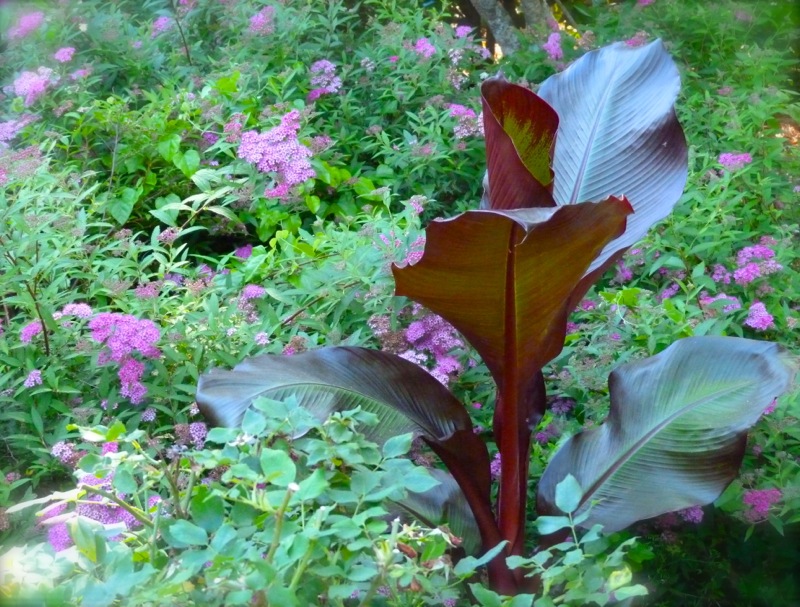A Little Bit of Jungle
 Sunday, May 26, 2013 at 8:45PM
Sunday, May 26, 2013 at 8:45PM Penelope Rose is a beautiful shrub rose which begins its bloom in May and will repeat bloom through the summer and into fall: There are many flowers blooming in the garden now, but already I sense the sweet promise of spring is gone. I only hope we can survive the onslaught of high heat, bad bugs, viruses, mildew and molds that come with summer. Will I have the energy to face the thugs that hover over me and breathe down my neck? I break into a sweat just thinking about it. Overnight, weird weeds will spring up, and if I turn my back they are likely to tap me on the shoulder, then laugh when I discover my prized plants smothered by their tendrils.
There are many flowers blooming in the garden now, but already I sense the sweet promise of spring is gone. I only hope we can survive the onslaught of high heat, bad bugs, viruses, mildew and molds that come with summer. Will I have the energy to face the thugs that hover over me and breathe down my neck? I break into a sweat just thinking about it. Overnight, weird weeds will spring up, and if I turn my back they are likely to tap me on the shoulder, then laugh when I discover my prized plants smothered by their tendrils.
My garden is a refuge from the wild areas that encroach all around. It was carved out of tangled overgrowth, and a little bit of jungle remains. Warm temperatures and rain promote rapid growth, and the thicket would return quickly, if I let it.
I recently discovered black spot and white flies in my vegetable garden, along with invasive bamboo shoots sprouting up through its soil, so my gloomy mood is justified. But briefly, for I am always an optimist. Mornings are still cool, and the humidity is just beginning to rise in the afternoons. The weather of the past few days has been pleasant, and the garden is looking good. Here's a quick review of my little bit of jungle:
In the gardens that surround the lawn in front of the house:


Below are some of the late spring/early summer bloomers:
Row 1: Flowers by the parking court; Anthony Waterer Spirea. Row 2: Rosa Mutabilis; Penstemon Huskers Red. Row 3: Purple verbenas; McKana Hybrid Columbine. Row 4: Calla Lily; Rosa Palustris.
Top: Amaryllis and Gazania. Bottom: Gazania; Hibiscus
Of course I love all these flowers, but my heart remains with beautiful foliage:Row 1: Red Banana plant; Chinese Fan Palm. Row 2: Hosta Francis Williams; Caladium. Row 3: Whitewater Redbud; Tropicana Canna Lily.
No plant has prettier foliage than the red banana plant, and I am happy to report that mine has returned, despite its marginal hardiness in my area. It remains my favorite plant purchase from last year:
In the top photo below you can see what is just a few steps beyond the woodland garden. Below that image are photos demonstrating what happens when a determined gardener intervenes!
Have a great week, and don't let the weeds get you down! Deborah
 Permalink
Permalink